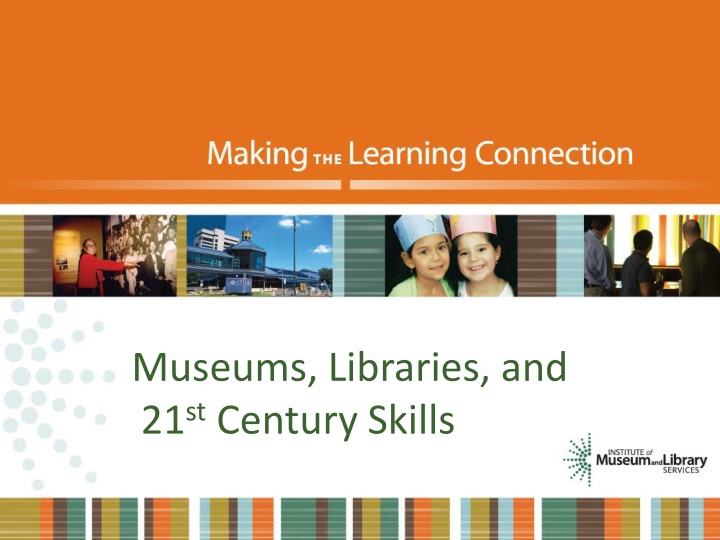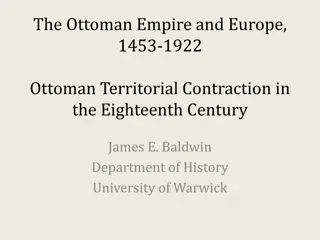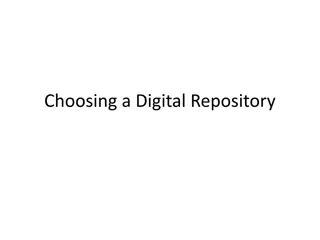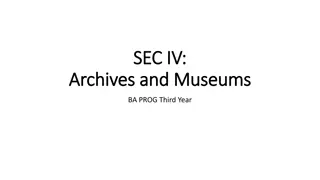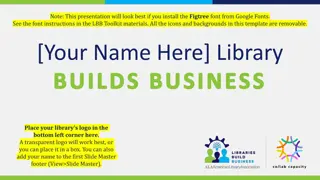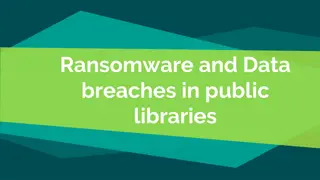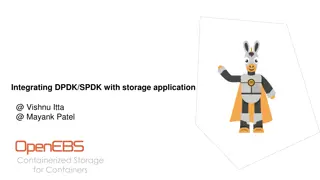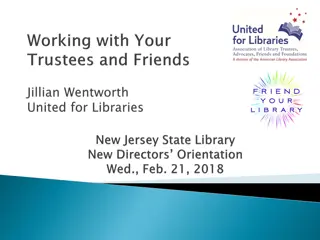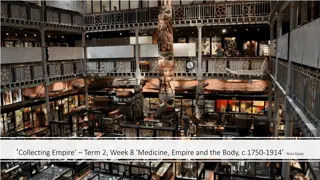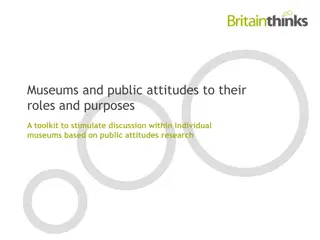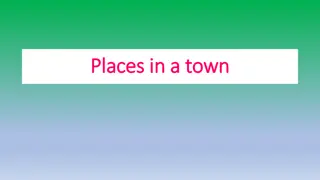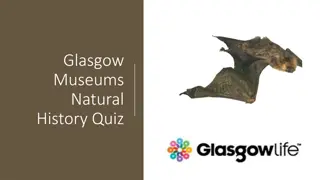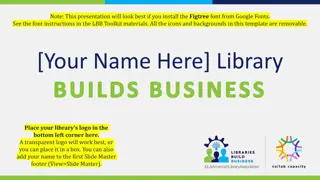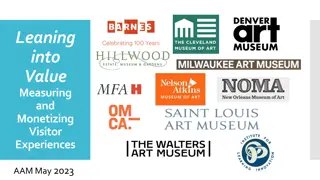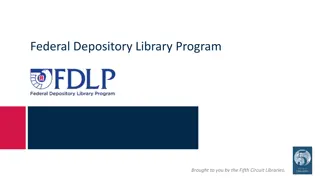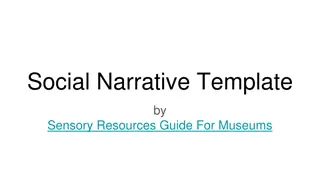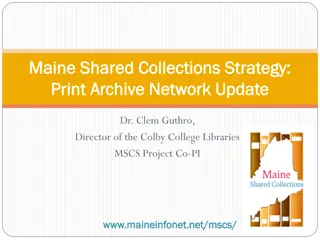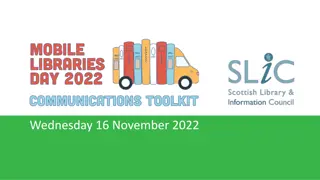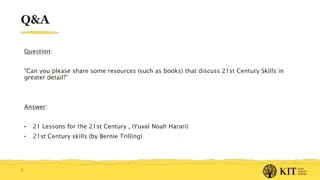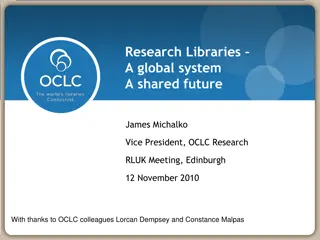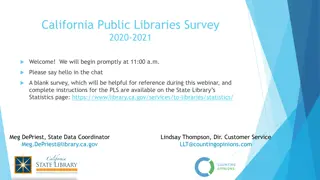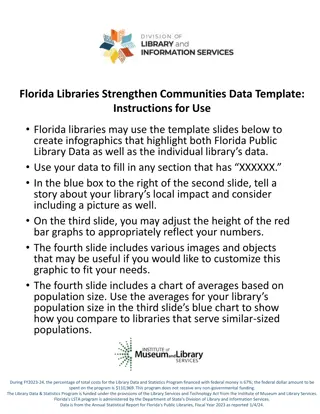Museums, Libraries, and 21 Century Skills
Encouraging creativity and critical thinking in education to prepare children for the rapidly changing world of tomorrow. Exploring the importance of innovative learning experiences and skill development in shaping future success.
Download Presentation

Please find below an Image/Link to download the presentation.
The content on the website is provided AS IS for your information and personal use only. It may not be sold, licensed, or shared on other websites without obtaining consent from the author.If you encounter any issues during the download, it is possible that the publisher has removed the file from their server.
You are allowed to download the files provided on this website for personal or commercial use, subject to the condition that they are used lawfully. All files are the property of their respective owners.
The content on the website is provided AS IS for your information and personal use only. It may not be sold, licensed, or shared on other websites without obtaining consent from the author.
E N D
Presentation Transcript
Museums, Libraries, and 21st Century Skills
What will learning look like in the future?
Question #1 What will the world be like twenty or so years from now when the children who visit your institution have left school and are out in the world?
Question #2 What skills will these children need to be successful in this world you have imagined twenty years from now?
Question #3 What were the conditions that made your high-performance learning experiences so powerful?
Question #4 What would learning be like if it were designed around your answers to the first three questions?
For us to grow, we have to educate people to do jobs that don t yet exist, which means we have to invent them and train people to do them at the same time. That is harder, and it is why we need everyone to aspire to be a creative creator or creative server. Thomas Friedman and Michael Mandelbaum, That Used to Be Us, pp. 137 (2011)
P21 Strategic Council Members http://www.p21.org http://www.p21.org
reativity ollaboration ommunication ritical Thinking
Basic Literacy Visual Literacy Creativity & Innovation Critical Thinking & Problem Solving Learning & Innovation Skills Scientific and Numerical Literacy Cross-Disciplinary Thinking Communication & Collaboration
Media Literacy Information Literacy Information, Media & Technology Skills ICT (Information, Communications & Technology) Literacy
Flexibility & Adaptability Initiative & Self-Direction Social & Cross-Cultural Skills Life & Career Skills Productivity & Accountability Leadership & Responsibility
Global Awareness Civic Literacy Environmental Literacy 21st Century Themes Health Literacy Financial, Economic, Business, & Entrepreneurial Literacy
In the 21stcenturyexpertise is less about having a stockpile of information or facts at one s disposal and increasingly about knowing how to find and evaluate information on a given topic -Douglas Thomas and John Seely Brown, A New Culture of Learning: Cultivating the Imagination in a World of Constant Change (2011)
Why are 21st Century Skills Important?
All of these qualitiesempathy, discipline, the capacity to solve problems, the capacity to think critically these skills don t just change how the world sees you. They change how we see ourselves. They allow each of us to seek out new horizons and new opportunities with confidence with the knowledge the we re ready; that we can face obstacles and challenges and unexpected setbacks. That s the power of education. -President Obama, remarks to Booker T. Washington Graduates, Memphis, TN, May 16, 2011
21st Century Societal Shifts 20th Century 21st Century 10-15 jobs (US Dept. of Labor 2004) # Jobs/Lifetime 1-2 Jobs Simultaneous mastery of many rapidly changing fields Job Requirement Mastery of one field Job Competition Local Global Non-routine; technical; creative; interactive Routine; hands-on; fact based Work Model Institution centered; forma degree attainment is primary goal Learner centered; self-directed, lifelong learning is primary goal Education Model Multi-directional (bottom-up, top down, side to side, etc.) Organizational Culture Top down
What are the most important skillsets students leaving high school need to have to thrive in college and life? Dennis Maple, President of ARAMARK Education, and Larry Merlo, CEO of CVS Caremark Corporation say: Critical Thinking Creativity and innovation Resiliency Communication Collaboration Morning Plenary discussion, 2012 Building a Grad Nation Summit, Washington, DC
Today's technology-enabled, information-rich, deeply interconnected world means learning not only can but should happen anywhere, anytime. We need to recognize these experiences, whether the environments are physical or online, and whether learning takes place in schools, colleges or adult education centers, or in afterschool, workplace, military or community settings. Secretary of Education, Arne Duncan, at 4th Annual Launch of the MacArthur Foundation Digital Media and Lifelong Learning Competition (9/15/11)
Recognition of Lifelong Learning -Banks et al. Learning in and out of school in diverse environments Seattle: NSF LIFE Center and University of Washington Center for Multicultural Education. 2006.
From Connected to Hyper-Connected Back in 2005, Twitter was still a sound, the cloud was something in the sky, 3G was a parking space, applications were what you sent to college, and Skype was a typo. From That Used to Be Us (2011) by Thomas Friedman and Michael Mandelbaum
Cell Phone & Computers Increasingly Common % Own cell phone 81 70 43 2007 2002 2010 % Use computer 50 39 32 2010 2007 2002 Based on median % across the 16 nations where 2002, 2007 and 2010 data are available. PEW RESEARCH CENTER Q62 & Q65
National Research Council Study Classifies 3 Domains of Competence o The Cognitive(critical thinking, information literacy, creativity) o The Intrapersonal (work ethic, flexibility, initiative) o The Interpersonal (teamwork, collaboration, leadership) Image: Cover of report, Education for Life and Work: Developing Transferable Knowledge and Skills in the 21st Century (2012), Center for Education, National Research Council
The 21st Century Museum/Library Shift 20th Century Museum/Library Primarily content driven 21st Century Museum/Library Combination of audience and content driven Tangible and digital objects Mostly tangible objects One-way Multi-directional Focus on presentation and display Acts independently Focus on audience engagement, experiences Acts in highly collaborative partnerships Embedded in community Located in community Learning outcomes assumed, implied Learning outcomes purposeful
All libraries and museumsand the people they serve stand to benefit from becoming more intentional and purposeful about accommodating the lifelong learning needs of people in the 21st century, and doing this work collaboratively in alignment with community needs. From Libraries, Museums, and 21st Century Skills, IMLS (2009), pp. 7
Where can I find more information about 21st Century Skills?
IMLS Resources http://www.imls.gov/21stCenturySkills Museums, Libraries and 21st Century Skills publication 21st century skills podcast Community workshop toolkit Self-assessment tool Community learning scan Information about successful IMLS- funded projects involving 21st century skills Resource bibliography
Other Useful Resources For a list of other useful resources, please visit the other resources tab of the IMLS 21st Century Skills website to find a list of helpful links and a bibliography of current research and reports. www.imls.gov/21stcenturyskills
